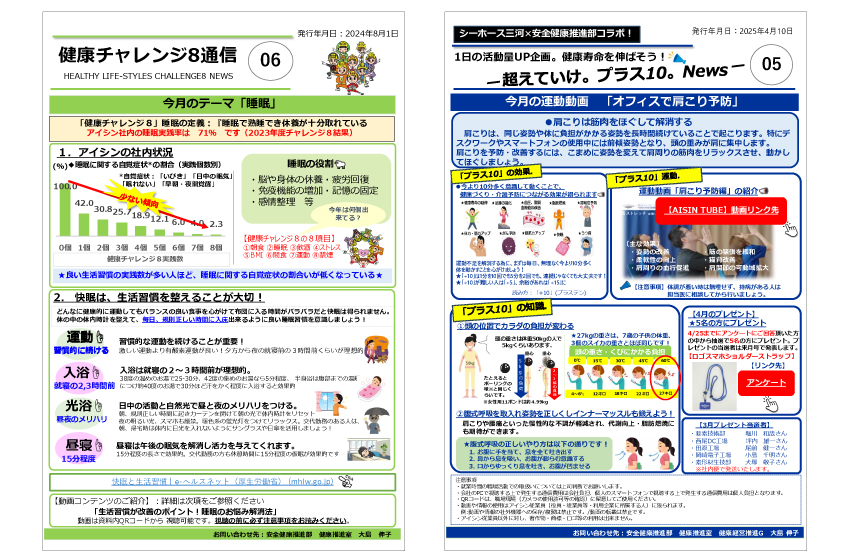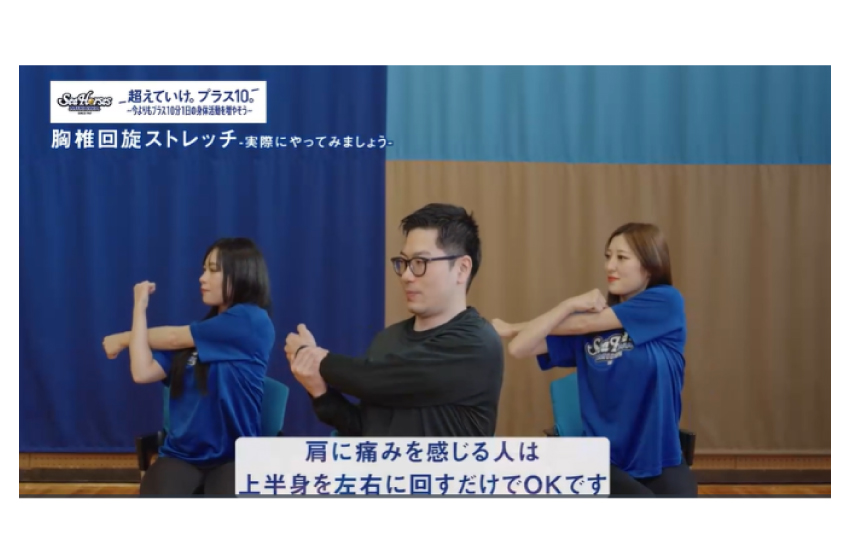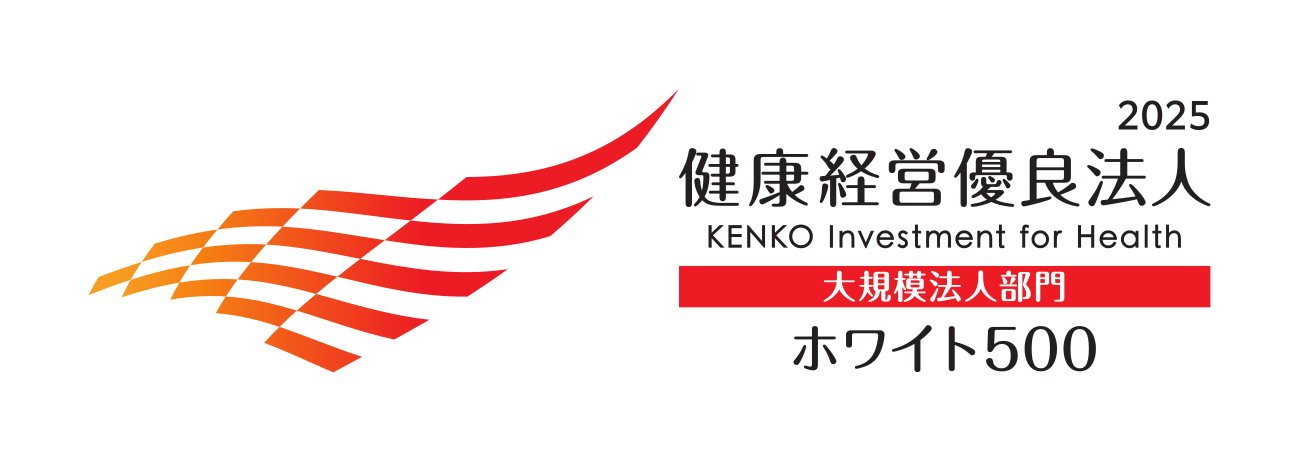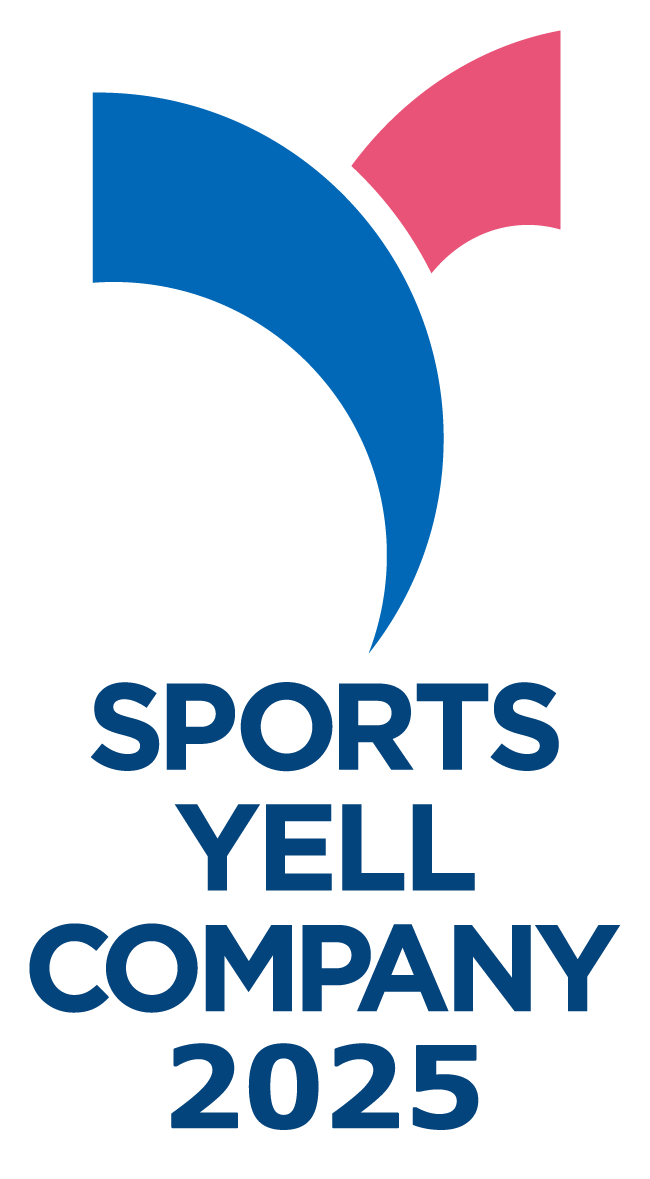Society
Basic stance and policy
Aisin recognizes that the safety and health of our employees are paramount to delivering a level of quality our customers demand. We have, therefore, issued the “Aisin Group Health Declaration” in April 2021 and are committed to health management, focusing on preventing lifestyle-related diseases and supporting mental health among our employees.
Promotion Structure
The direction of health-related policy is discussed and approved annually by the Aisin Group Safety and Health Committee and is then rolled out gradually to workplace safety and health committees at each Group company.
The Council for the Promotion of Healthy Business Practices, which falls under the Committee umbrella, receives policy direction from the Group Safety and Health Committee. With members including the Safety and Health Promotion Department (which includes medical professionals), HR functional departments, the Workers’ Union, and the Health Insurance Society, the Council addresses companywide issues and discusses countermeasures.
Furthermore, regarding the health promotion initiatives at group companies, the Aisin Group Health and Safety Subcommittee conducts activities tailored to each company's needs, aiming for mutual improvement through two-way communication.

Strategy
With regard to materiality issues, we have established a mission to instill a corporate culture that embraces challenge and set relevant indicators and targets. We aim for presenteeism performance of at least 85% by FY2031 and are promoting mental and physical measures to improve KPIs.
For the sake of mental health, we are promoting further improvements in the practical skills of workplace supervisors for early detection and response to prevent individuals experiencing health issues from becoming severely ill. In this effort, we are focusing on preventing both new cases and relapses.
For physical health, we are working to strengthen preventative measures through health promotion and workplace environment improvements, as well as preventing severe conditions through early detection and early treatment, aimed at preventing lifestyle-related diseases.
Moreover, amid the challenging labor shortage caused by the declining birthrate and aging population, to secure the workforce we need, we are promoting a work environment where senior employees and women can remain with the company. We are putting these measures into practice to ensure that everyone can perform to their full potential both physically and mentally.
While maintaining the confidentiality of personal information, we share information from senior management down to department members by engaging in discussions and reviews aimed at improving methods and metrics.
Presenteeism: When an employee comes to work despite having an illness or symptoms, resulting in reduced performance and productivity.
Presenteeism performance: Calculated using the University of Tokyo’s Single-Item Presenteeism Question (SPQ), this metric shows the percentage of employees who felt they could perform at 80% or more of their capacity over the past month, with 100% representing performance achievable while healthy.
Related materiality issues
| Materiality | Goals (KGI) | Indicators (KPI) | FY2031 Target Value | |
|---|---|---|---|---|
| Priority Issue | Direction for Realization | |||
| Empowering diverse talents for personal fulfillment | Instilling a corporate culture that embraces challenge | Environment conducive to a proactive work style | Presenteeism Performance Level* | 85% |
Presenteeism performance: percentage of employees who felt they could perform at 80% or more of their capacity over the past month, with 100% representing performance achievable while healthy.
Healthy business practices strategy map (Aisin parent)

Key initiatives
Initiatives to promote a spirit of challenge
Mental health measures
Efforts to prevent severe illness through early detection and treatment
Aisin, in its aim to minimize work time lost to mental health issues, focuses on prevention and early detection. To ensure that supervisors can recognize signs of distress in their subordinates and promptly connect them with company doctors or external parties, we have expanded the scope of line care training participants starting in FY2024. The training is designed to include various case studies that enable supervisors to experience simulated scenarios and help them comprehend the importance of mental health initiatives and translate their understanding into practical action.
To help employees recognize their own stress and promote self-care, we conduct stress checks alongside self-care training, distribute video content, establish health consultation services, and provide occupational physician consultations for those experiencing high stress. In FY2025, we expanded the target audience for self-care training beyond the traditional second-year employees to include newly promoted staff, whose new roles or responsibilities often impose increased mental strain.
| FY2024 | FY2025 | |||||
|---|---|---|---|---|---|---|
| Target population | Number of participants | Implementation rate | Target population | Number of participants | Implementation rate | |
| Self-care education | 375 | 375 | 100% | 1,284 | 1,284 | 100% |
| Line care education | 3,318 | 3,318 | 100% | 1,058 | 1,058 | 100% |
Stress check results
| FY2021 | FY2022 | FY2023 | FY2024 | FY2025 | |
|---|---|---|---|---|---|
| Stress check participation rate | 91.6% | 86.1% | 87.5% | 92.3% | 89.7% |
| Percentage of highly stressed individuals | 3.7% | 4.5% | 3.7% | 3.9% | 15.1% |
Revised criteria for identifying highly stressed individuals starting FY2025
Changed the highly stressed individual threshold from our internal benchmark (5%) to the raw score conversion method (10%) recommended by the Ministry of Health, Labour and Welfare. Increasing the recognized proportion of highly stressed staff promoted greater awareness of stress and facilitated measures for coping.
When using the 5% benchmark: 4.0%
Initiatives for improving the work environment
For workplaces, we provide feedback on stress check workplace diagnosis results and offer individualized support to high-risk workplaces. By linking this to workplace environment improvements, we are advancing the prevention of mental health issues.
As tools to support workplace-led improvement activities, we distribute videos featuring improvement implementation flows and case studies of improvements by factor.
Furthermore, we cross-reference results from employee surveys conducted by HR and legal functions, perform multi-faceted analysis, and implement effective workplace improvement activities.
Workplace improvement rate
| FY2022 | FY2023 | FY2024 | |
|---|---|---|---|
| High-risk worksites | 3 | 3 | 7 |
| Support for workplace improvement | 100% | 100% | 100% |
| Rate of improvement | 100% | 100% | 100% |
Prevention of relapses following return to work
We have put in place a return-to-work support program staffed by clinical psychologists and public health nurses to ensure employees can return to work safely and reliably. The return-to-work trial involves employees who have initiated the return-to-work process visiting the company's return-to-work support office. There, they perform tasks not directly related to their job duties during their scheduled work hours, allowing us to assess the recovery of their physical stamina, concentration, and task execution abilities.
| FY2024 | FY2025 | |
|---|---|---|
| Returned to work | 63% | 78% |
| Leave extended (resumption of focus on therapy) | 37% | 22% |
Recovery assessment results based on return-to-work trial (FY2025)

Physical health measures
Early detection and treatment
We follow up on regular health checks with both the workplace and the patient to ensure all employees take part and have maintained a 100% participation rate each year.
As a follow-up to health checkups, we have developed a proprietary system that identifies individuals at high risk for brain or heart disease based on each employee's health check results from the preceding 10 years. Based on the level of risk, we offer guidance through interviews with occupational physicians and implement safety precautions by way of work restrictions. We also emphasize the importance of self-directed health monitoring and strive to avoid aggravating patients’ symptom.
Regular health checks and follow-up measures
| FY2023 | FY2024 | FY2025 | |
|---|---|---|---|
| Regular health checks participation rate | 100% | 100% | 100% |
| Detailed examination participation rate | 70.3% | 70.3% | 70.2% |
| Work restriction determination rate | 100% | 100% | 100% |
| Consultation implementation rate | 100% | 100% | 100% |
| Specific Health Guidance implementation rate | 66.1% | 71.0% | 72.6%* |
The FY2025 Specific Health Guidance issuance rate reflects the implementation rate as of April 2025
Cancer prevention
In addition to regular health checks, the Health Insurance Society, Workers’ Union, and company provide cost subsidies for various cancer screenings, working to reduce health risks from cancer through early detection.
Colon cancer screening is offered to all employees aged 35 and older during their regular health checkups.
Furthermore, we promote gynecological screenings (cervical cancer and breast cancer screenings) for female employees aged 20 and above. We are increasing the range of eligible medical providers to make examinations more convenient and are also running monthly awareness campaigns for comprehensive health checks and cancer screenings.
Cancer Screening Participation Status
| FY2023 | FY2024 | FY2025 | |
|---|---|---|---|
| Colorectal screening | 18,375 people | 18,710 people | 18,747 people |
| Gynecological examinations | 894 people | 927 people | 983 people |
| Comprehensive health checks | 2,692 people | 2,621 people | 2,672 people |
| Brain checkups | 464 people | 468 people | 502 people |
Health awareness initiatives
Since FY2022, Aisin has been running its Health Challenge 8 initiative, which aims to broaden opportunities for employees to develop eight good health habits. Thus, we are developing our employees and workplaces to be capable of proactively monitoring and managing their physical and mental well-being.
In FY2025, to support employee health awareness, we published a Health Challenge 8 Newsletter every month. Each year, we issue our TOP Health Declaration and provide feedback on the results of workplace health initiatives. We also promote a health-conscious workplace culture that empowers employees, led by workplace promoters, to proactively engage in health-related activities.
Additionally, as we focus on exercise—an area of Health Challenge 8 with low implementation rates—we collaborated with the Seahorses Mikawa professional basketball team to spur employees' interest in physical activity. This has included distributing exercise videos featuring top athletes, cheerleaders, and professional trainers, and publishing the “Go Beyond. Plus 10.” news service. We are taking a group approach to encourage everyone, including those who enjoy exercise, those who struggle with it, and those who are indifferent, to increase their daily activity by 10 minutes.
Challenge 8 Implementation Rate



Establishing healthy habits
To encourage exercise habits, we cohost a smartphone app–based walking event twice a year with the Health Insurance Society. Last year, 4,985 participants formed teams with colleagues or friends to compete in step count contests.
Additionally, to encourage employees and their families to freely engage in exercise, we held five Style Up Seminars during the year, with 1,246 participants. As health awareness has increased, the proportion of people exercising regularly has expanded.
On the subject of healthy eating, we held two nutrition education seminars annually around the time of the health checks, when health awareness peaks. As a result of careful explanation of the body's mechanisms and examples of actions that will help achieve an ideal physique, nearly all seminar participants showed awareness of behavioral change.
Furthermore, nutritionally balanced meals described in the seminars were offered in the employee cafeteria to encourage sustained health awareness.
Exercise frequency

Other initiatives
Women's health issues
To counter declines in labor productivity and enable female employees to maximize their capabilities, we began addressing health topics specific to women in 2021. In FY2025, we focused on improving health literacy among younger employees, promoting education designed to foster awareness and knowledge about their own health challenges and empower them to proactively make improvements. Simultaneously, we offered training for managers and supervisors to acquire knowledge about their subordinates' health challenges and the skills to support them appropriately. Collaborating with each department, we promote a workplace culture that deepens mutual understanding between men and women.
Furthermore, in addition to our existing women's support systems, we introduced a femtech program in 2022. This program supports solutions for women's unique health challenges, such as menstruation and menopause and enabling women to balance work with life events.
Senior employee support initiatives
To enable employees to remain healthy and vibrant while continuing to work as long as they want, we view maintaining and improving physical fitness as essential. Beginning this fiscal year, we launched the Body Learning Workshop for skilled workers in their 50s and conducted nine types of physical fitness assessments. Based on these results, we provide exercise guidance and implement stretching routines aimed at remediating fatigue. This program aims to awaken participants to their own physical fitness and encourage them to continue activities independently after the program concludes.
Additionally, our annual Life Design Seminars (for employees aged 33 and 53) provide awareness activities on preventing lifestyle-related diseases and managing stress.
Training participation results
| FY2024 | FY2025 | |||||
|---|---|---|---|---|---|---|
| Target population | Number of participants | Implementation rate | Target population | Number of participants | Implementation rate | |
| Life design seminar (30s) | 1,072 people | 469 people | 44% | 840 people | 540 people | 64% |
| Life design seminar (50s) | 703 people | 406 people | 58% | 840 people | 598 people | 71% |
| Women's health education (individual) | 153 people | 153 people | 100% | 1,051 people | 1,051 people | 100% |
| Women's health education (manager) | Revised target population | 4,024 people | 3,947 people | 98% | ||
Infectious disease prevention
Aisin has established guidelines for measures to prevent transmission during infectious disease outbreaks. These guidelines are disseminated to group companies and suppliers both domestically and internationally. Should an episode of infectious disease break out, we promote measures to control infection to protect the lives of all individuals associated with the Aisin Group.
Initiatives for overseas travelers
For overseas travelers, including expatriates, accompanying family members, and business travelers, Aisin provides training and information to encourage practices targeted at self-protection. This includes the issuance of company advisories and evacuation decisions, as well as information on infectious diseases and vaccinations from the Ministry of Health, Labour and Welfare's Quarantine Station, and safety guidelines from embassies and consulates in various countries.
Moreover, we have contracted with specialized medical security agencies to offer services that help shield employees from various medical and safety risks in the countries and regions where we operate.
Results and future initiatives
After one year of implementation, we have seen improvements in employees' health literacy (the ability to find and apply information about health and medical care), and awareness is gradually increasing. We will further strengthen our health promotion initiatives to reduce presenteeism (working while experiencing health issues) and absenteeism (being absent from work due to illness) as we strive to enhance productivity.
| FY2023 | FY2024 | FY2025 | |
|---|---|---|---|
| Percentage of individuals with high health literacy | 53.1% | 56.0% | 70.0% |
| Presenteeism | 84.0% | 83.1% | 76.0% |
| Absenteeism | 2.0% | 1.9% | 2.0% |
| Presenteeism | Absenteeism | |
|---|---|---|
| Assessment method | Calculated using the University of Tokyo’s Single-Item Presenteeism Question (SPQ). Percentage of employees who felt they could perform at 80% or more of their capacity over the past month, with 100% representing performance achievable while healthy |
Rate of employees on sick leave for 30 calendar days or more (excluding paid leave) after the start of sick leave during the fiscal year (number of employees on leave during the fiscal year ÷ Number of full-time employees × 100). |
| Number of respondents | 32,189 people | 35,742 people |
| Response rate | 90.3% | 100% |

Certified for 9 consecutive years starting in 2017
KENKO Investment for Health 2025 (large enterprise category): White 500

Recognized as a company that actively promotes sports to enhance employee health with the aim to encourage athletic participation among the prime working-age generation and build societal momentum for sports.

